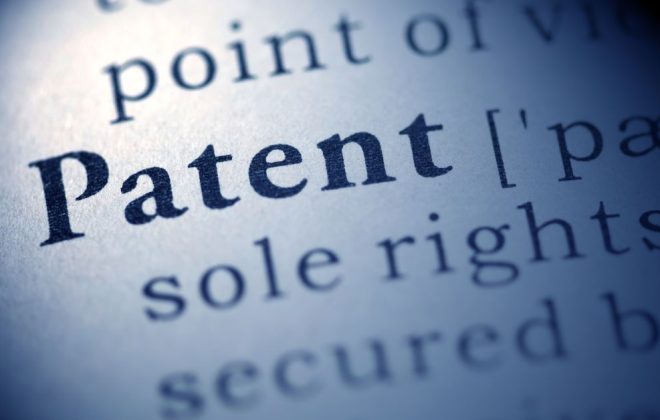Patent Attorney Brisbane .
Patent law can prove to be a difficult field to navigate. Kings Patent & Trade Marks Attorneys are experts in the field of Patents. Our Brisbane patent attorneys offer vast experience with a broad range of industries and technologies, and we can help you with all patent application, management and enforcement matters.
What is a Patent?
A patent grants the holder the exclusive legal right to exploit an invention for a set period of time. This right can help you or your business to dominate a market, attract investors and serves as a valuable bargaining tool in commercial negotiations.
Patents can be issued to protect any device, substance, method or process that constitutes a new and useful invention. Anything new which involves some ingenuity or inventive skill may be patentable, including software, microorganisms and pharmaceuticals. There is a common misconception that an invention needs to be a major or complex breakthrough to be patentable. However, inventions which feature a simple or small improvement can be patented, providing the improvements result in significant advantages.
Process of Obtaining a Patent
The process of obtaining a patent begins by lodging a description of your invention with the Patent Office. This description is known as a “patent specification,” and is a technical document that fully describes the invention, as well as satisfying a number of other legal requirements. Drafting your patent specification is critical and better left to the patent law professionals, and the team at Kings is happy to help.
Once the patent specification is lodged, it is reviewed by the Patent Office to determine if the document meets their criteria for patentability, or whether changes are required.
If all criteria are met and possible changes are implemented, the patent will be granted.

Pictured: Australia has long been a nation of innovators. In 1964 Tom Angove of Angove’s winemakers and distillers invented the wine cask. The title of the patent application was ‘improved container and pack for liquids’.

Step 1
Patent Application

Step 2
Examination

Step 3
Response

Step 4
Patent Granted
Requirements for a grant of a Patent
For a patent to be granted, your invention must satisfy the following requirements:
- Novelty – the invention must be new, i.e. the invention must not have been made public before the date of the application
- Inventive Step – the invention must have an “inventive step,” meaning that the invention must not be obvious to a person skilled in the same technical field
- Utility – the invention must be useful or have utility, and must achieve the use intended by the patentee
The patent protection process generally begins with preparing and filing your patent specification with the Patent Office. Filing your patent specification establishes a “priority date.” Establishing the priority date early is important, as it is the date that will be used to assess the novelty and inventiveness of the invention. That means if two similar patent applications are made close together, the priority date will be used to help determine which invention came first.
Generally, the patent specification must describe the invention in sufficient detail to enable “a person skilled in the art” to put the invention into effect without the need to exercise further skill or ingenuity.
Filing a provisional patent application is the first step to obtaining patent protection.
A provisional patent application is valid for a 12-month term. Filing a provisional patent application establishes the priority date for the invention it describes. However, a provisional patent application does not turn into a patent and is therefore not enforceable. Rather, the provisional patent application vests the applicant with the right to obtain a patent and provides them with a 12-month window to assess the commercial viability and further develop the invention.
If no further development of the invention is planned, or if the applicant wishes to obtain a patent as soon as possible, it may be more appropriate to begin the patent protection process by filing a complete patent application.
Within 12 months of filing a provisional patent application, an applicant must decide whether they wish to complete the process of obtaining patent protection for their invention. This may be achieved in one of two ways:
- Direct Filing – filing a complete patent application directly in each country or region of interest
- PCT Filing – filing an international patent application under the Patent Cooperation Treaty (PCT) to maintain pending international patent rights in 154 participating countries for an additional 18 months
When pursuing a PCT filing, at the conclusion of the additional 18 months, the filing must still be nationalised in each country or region of interest.
The term of a standard Australian patent is 20 years, commencing from the date the complete patent application is filed with the Patent Office.
After an application is filed, it must be examined by a Patent Examiner before it can be accepted for a grant of a patent. The examination must be requested, and the examination fee paid.
Generally, the examination must be requested within five years of filing the complete patent application, or within two months of receiving a direction from the Patent Office to request examination, whichever is earliest. If the examination is not requested, the complete patent application will lapse.
During the examination, the Patent Examiner will review the application for compliance with the Patents Act (1990) and Patent Regulations (1991).
If any objections are raised by the Patent Examiner, they will issue an examination report and the applicant is allowed 12 months to overcome the objections.
If no objections are raised, or if the objections are overcome, the Patent Office will issue a Notice of Acceptance for the grant of the patent, and the application will be advertised for three months for opposition purposes.
Any person may oppose the granting of a patent by filing a Notice of Opposition within the three-month period. If an opposition is filed, both the applicant and the opponent are given an opportunity to lodge evidence and argue their case before a Delegate of the Commissioner of Patents.
If there is no opposition, or if the opposition is unsuccessful, a patent will be granted upon payment of an official acceptance fee.
Lastly, annual fees are payable from the fourth anniversary of the filing date. These fees serve to maintain your patent application or to renew granted patents. During the application period these are called “maintenance fees.” After the patent has been granted they are known as “renewal fees.”
Recent Patent Blogs
How Do I Know if My Invention Qualifies for Patent Protection?
The patent system allows innovators to claim exclusive rights to their inventions. That’s important, because it means inventors can recoup their expenses in research and development, and it encourages the market to consistently invest in new technologies. However, not all inventions are patentable. To qualify…
Can You Patent an Idea Without a Prototype?
There are lots of ways to approach developing a new invention. One of the most common methods, especially in relation to mechanical inventions, is to create a prototype. Prototyping an invention is a great way to refine the concept and work through any roadblocks. Prototyping…
Software Patents in the United States 101
With advances in software occurring exponentially, there has been a global increase in software related inventions. Protecting such inventions is essential, especially in markets such as the United States where, in 2022, 63.5% of issued utility patents were “software-related”. Software is generally patentable subject matter…
Need more information in regards to Patents Law? Contact Us Today
Our Experienced Team

Jack King-Scott, PHD - Director
PATENT AND TRADE MARKS ATTORNEY (AUS & NZ)
Jack is a registered Australian and New Zealand patent attorney as well as a registered Australian trade marks attorney.

Clinton Priddle - Director
PATENT AND TRADE MARKS ATTORNEY (AUS & NZ)
Clinton is a registered Australian and New Zealand patent attorney as well as a registered Australian trade marks attorney.

Jonathan Lewis
PATENT AND TRADE MARKS ATTORNEY (AUS & NZ)
Jonathan is a registered Australian and New Zealand patent attorney as well as a registered Australian trade marks attorney.

Yang Zhao
PATENT AND TRADE MARKS PROFESSIONAL
Yang is completing his qualifications to become a patent attorney as well as a trade marks attorney.

Tahlia Dimech
TRADE MARKS ATTORNEY (AUS & NZ), PATENT PROFESSIONAL
Tahlia is a registered Australian and New Zealand trade marks attorney and is completing her qualifications to become a patent attorney.

Chloe Taylor
PATENT AND TRADE MARKS PROFESSIONAL
Chloe became interested in intellectual property and is on the way to become a registered Patent Attorney.
Industries We Service

Mechanical Engineering
- Mechanical & Electrical Devices
- Medical Devices
- Mining Engineering
- Control Systems
- Manufacturing Technology

Life Sciences
- Biochemistry
- Molecular Biology
- Immunology
- Microbiology
- Protein Crystallography & Bioinformatics

Software & ICT
- Apps
- Cloud-Based Computing
- Business Methods
- Physics & Electrical Engineering
- Telecommunications Engineering

Mining Technologies
- Mineral Processing Technologies
- Mining Methods
- Heavy Equipment (e.g. Excavator Buckets)
- Tailings Treatment & Disposal




